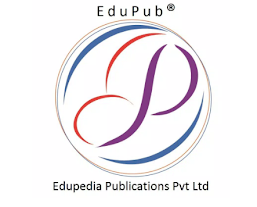In today's fast-paced digital landscape, eBook publication has become a critical component for disseminating knowledge and fostering education. EduPub.org, a trusted name in the publishing industry, offers unparalleled eBook publication services that empower authors, researchers, and institutions to share their work with a global audience. This article explores the key benefits of eBook publication and highlights how EduPub.org is revolutionizing the publishing space.

1. Global Accessibility
eBooks break down geographical barriers, allowing readers to access content from anywhere in the world. EduPub.org ensures that published eBooks are available on multiple international platforms, broadening the reach of authors and making valuable information accessible to diverse audiences.
2. Cost-Effective Publishing Solutions
Traditional publishing involves high costs for printing, distribution, and storage. eBook publication through EduPub.org offers a cost-effective alternative, providing affordable packages that cater to the needs of scholars, authors, and educational institutions without compromising on quality.
3. Eco-Friendly and Sustainable Option
With growing concerns about environmental sustainability, eBook publication presents a green alternative by reducing the demand for paper, ink, and physical distribution. EduPub.org is committed to supporting eco-friendly publishing practices, helping authors contribute to a more sustainable future.
4. Interactive Content Possibilities
Unlike traditional books, eBooks can integrate multimedia elements such as videos, hyperlinks, and interactive graphics. EduPub.org offers advanced technical support to help authors create engaging and dynamic content that enhances the reading experience.
5. Quick Publication Turnaround
The traditional book publishing process can be time-consuming, often taking months or even years. EduPub.org's efficient workflow significantly reduces the time to market, enabling authors to publish and distribute their work in just weeks.
6. Open Access for Knowledge Sharing
EduPub.org strongly advocates for open access to educational and research materials. By offering open-access publication options, the platform ensures that valuable content reaches a broader audience, fostering a culture of knowledge sharing.
7. Enhanced Discoverability
Digital publishing allows for greater discoverability through search engine optimization (SEO), metadata tagging, and strategic digital marketing. EduPub.org employs cutting-edge techniques to maximize the visibility of eBooks, ensuring that authors gain the recognition they deserve.
8. Long-Term Preservation
Physical books are vulnerable to damage and deterioration. eBooks published through EduPub.org are securely stored and easily accessible for future generations, preserving the intellectual and creative contributions of authors.
9. Comprehensive Author Support
EduPub.org offers end-to-end services, including editing, formatting, cover design, and ISBN allocation. This comprehensive approach allows authors to focus on content creation while relying on professional support for all technical aspects of publication.
10. Educational and Conference Publications
EduPub.org provides tailored solutions for academic institutions and conference organizers. The platform specializes in publishing research proceedings and educational materials, promoting academic collaboration and knowledge dissemination.
Conclusion
In an increasingly digital world, eBook publication is no longer a luxury but a necessity. EduPub.org stands at the forefront of this transformation, offering comprehensive services that cater to the diverse needs of authors and institutions. By embracing eBook publication through EduPub.org, authors can reach global audiences, reduce environmental impact, and contribute to a future where knowledge knows no boundaries.
Whether you are a seasoned author, an academic professional, or a research scholar, EduPub.org provides the perfect platform to bring your ideas to life and make a meaningful impact in the digital publishing landscape.



















